rough justice ‘84
summary
A detective agency management game with examples of:
- Story writing
- Cutscenes
- Branching dialogue
- Quest Design
project overview
I was brought onto the narrative team on Rough Justice ‘84 in the early-middle stages of development. Myself and an additional Narrative Designer were brought onto the project to replace the outgoing Lead Writer. I was responsible for writing the overall storyline, the main story quests, and the cutscenes.
Before my arrival, the Lead Writer had begun work on the first mission, but the main storyline had not been developed. After making extensive notes on the existing story material and conversing with the outgoing Lead Writer, I created the main story and mapped it out across five chapters, each averaging 4-5 missions.
cutscenes
We utilized short animated cutscenes at various points in the narrative, typically to set up new operations or important story beats.
As well as the script, I created simple storyboard images to use as references.
Below are a collection cutscenes from various points in the story:
dialogue
In Rough Justice ‘84, the player takes on the role of Jim Baylor a former police detective who was framed for murder. Throughout the game, players switch perspectives between Jim and his agents. On missions, we control agents, and we choose Jim’s dialogue in cutscenes.
While Jim has a defined character, we wanted to give the player a way to roleplay “their version” of Jim. While these choices wouldn’t affect the game directly, I felt they were necessary to immerse the player in the world and character and give them a sense of ownership over Jim.
The video below is taken from the game’s first dialogue sequence. We have just been picked up by our best friend and former partner Hank Kowalski and filled in on the game's set-up (that we’ll be helping him run a detective agency).
After completing a few contracts, we unlock “Operations”, RJ 84’s main story missions. The first of these involves investigating the criminal dealings of a biker gang — The Black Valkyries.
Below is an edited down version of the first part of the operation.
After searching the Black Valkyrie’s garage and staking out a deal, we then need to visit Seneca City’s new District Attorney — Trent Dawson, to discuss getting a deal for a captain in the gang, in exchange for them wearing a wire to the chapter’s next meeting.
Follow the link below for the Articy:Draft flow diagram for this dialogue (with minor edits for readability).
Note: I recommend downloading the PDF file and viewing it in Adobe Reader.
story development
long-form synopsis
Outside of the central premise of a detective crime story set in the 1980s, I had a reasonably broad scope for how the story would play out. Following several conversations with the Lead Writer and Creative Director, I established a strong foundation for the style and tone — taking inspiration from 80s action films, detective pulp, and comic-book sensibilities (think a grounded Gotham City with big personalities and a tongue-in-cheek approach to genre tropes).
With the tone established, I wrote a long-form synopsis of events in a standard three-act structure, framing each chapter around a new villain that would ultimately all tie together in a revelatory climax.
Story Plotting
I used Articy:Draft to assign the different story beats from my long-form synopsis to nodes that would form each mission.
quest design
Rough Justice ‘84’s gameplay is split between contracts and story quests. Contracts are short, constantly generated mini-stories used to level up agents and gain income. Once a sufficient number of these contracts are completed, story quests unlock. These are longer and generally more complex versions of contracts that unlock sequentially and tell the game’s main story.
A typical quest involves sending an agent (or agents) to a place and undertaking various skill checks (determined by dice rolls) and mini-games (such as hacking and lockpicking). Players can often choose the approach they want to take that best suits their agent. For example, if they are physically strong, they might wish to use their strength to kick down a door rather than pick the lock.
There was a real balancing act to not overextend the scope of quests (as I was working around a tight budget) while still providing scope and depth to the challenges to ensure players had multiple different ways of handling them.
I generally used a “diamond structure” to the flows — where the courses would deviate based on choice up to a certain point but would always be rooted to a linear path (where variables that count as success or failure are counted, and this is then reflected in the debriefing text).
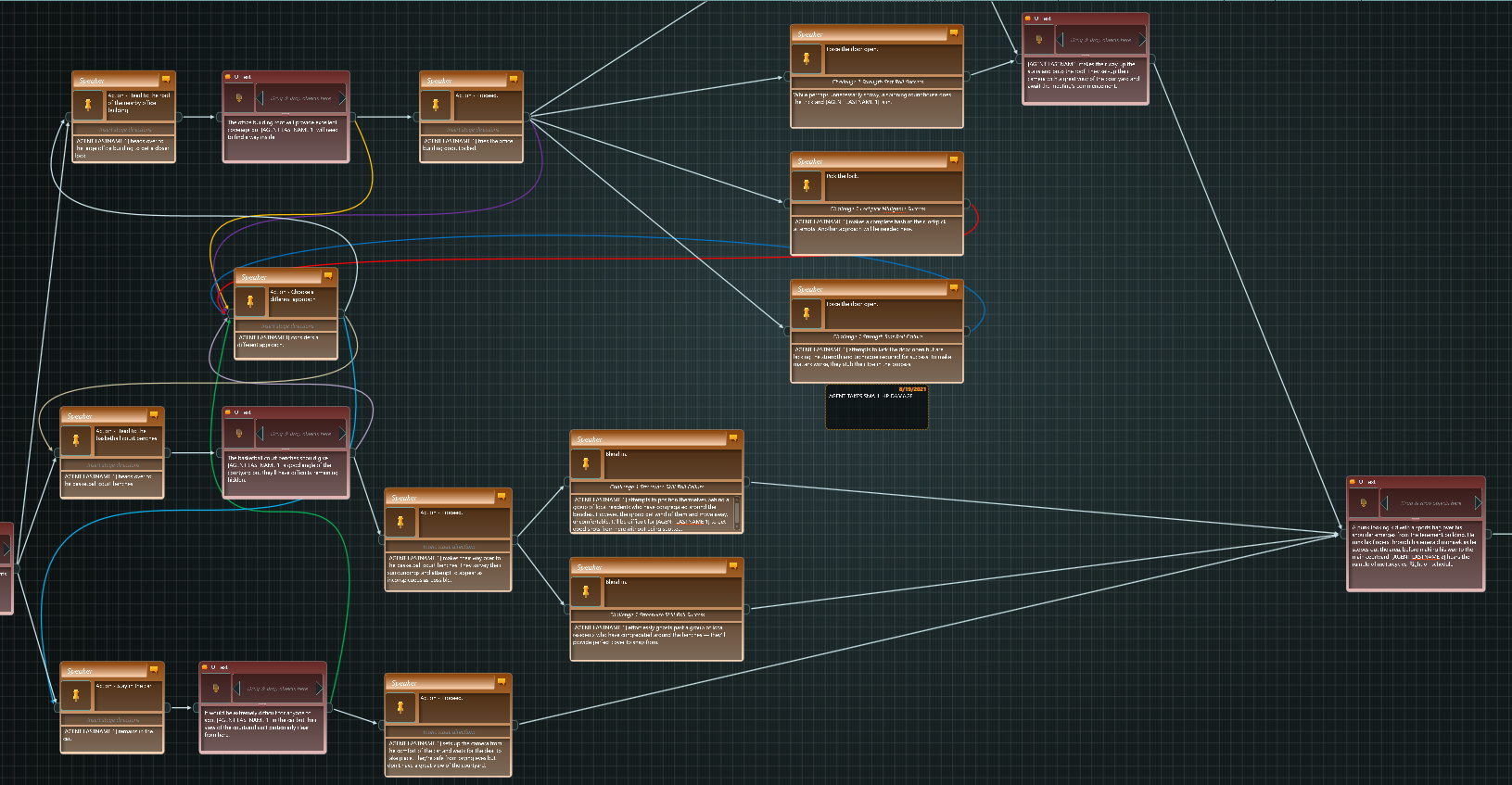
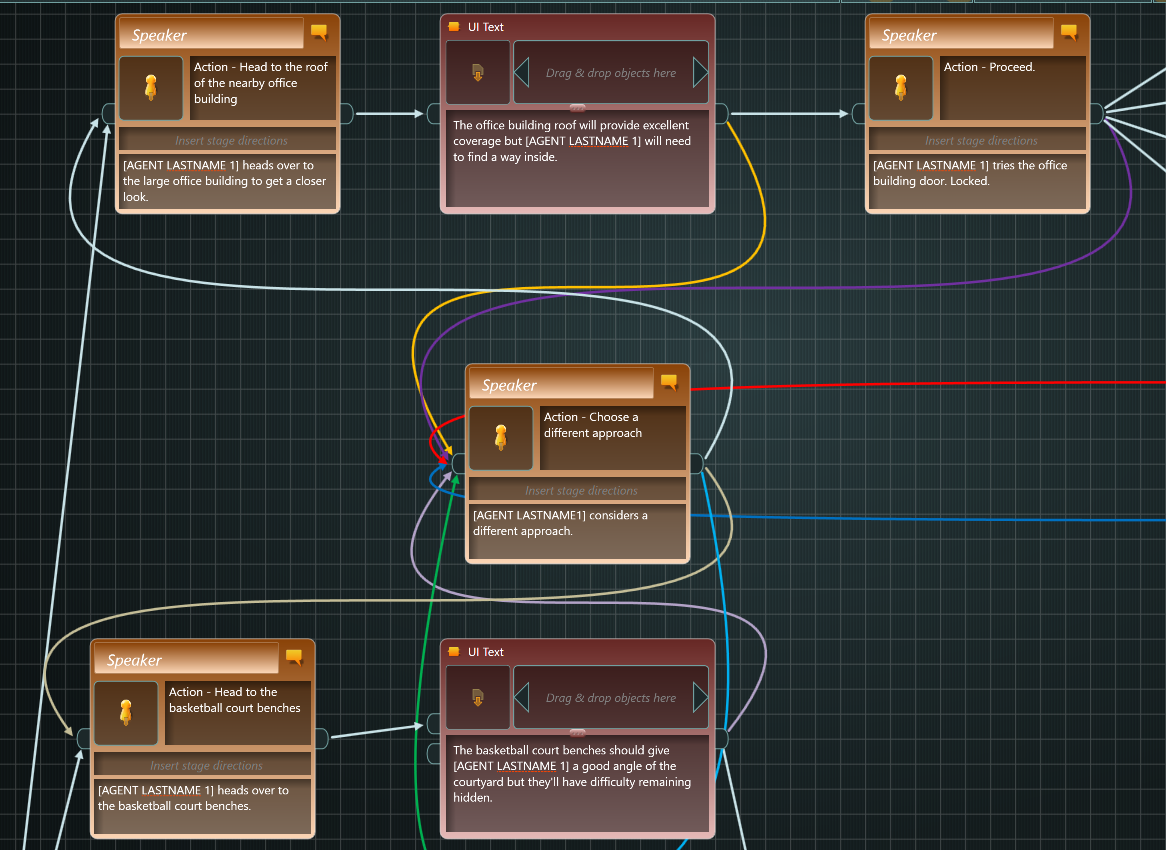
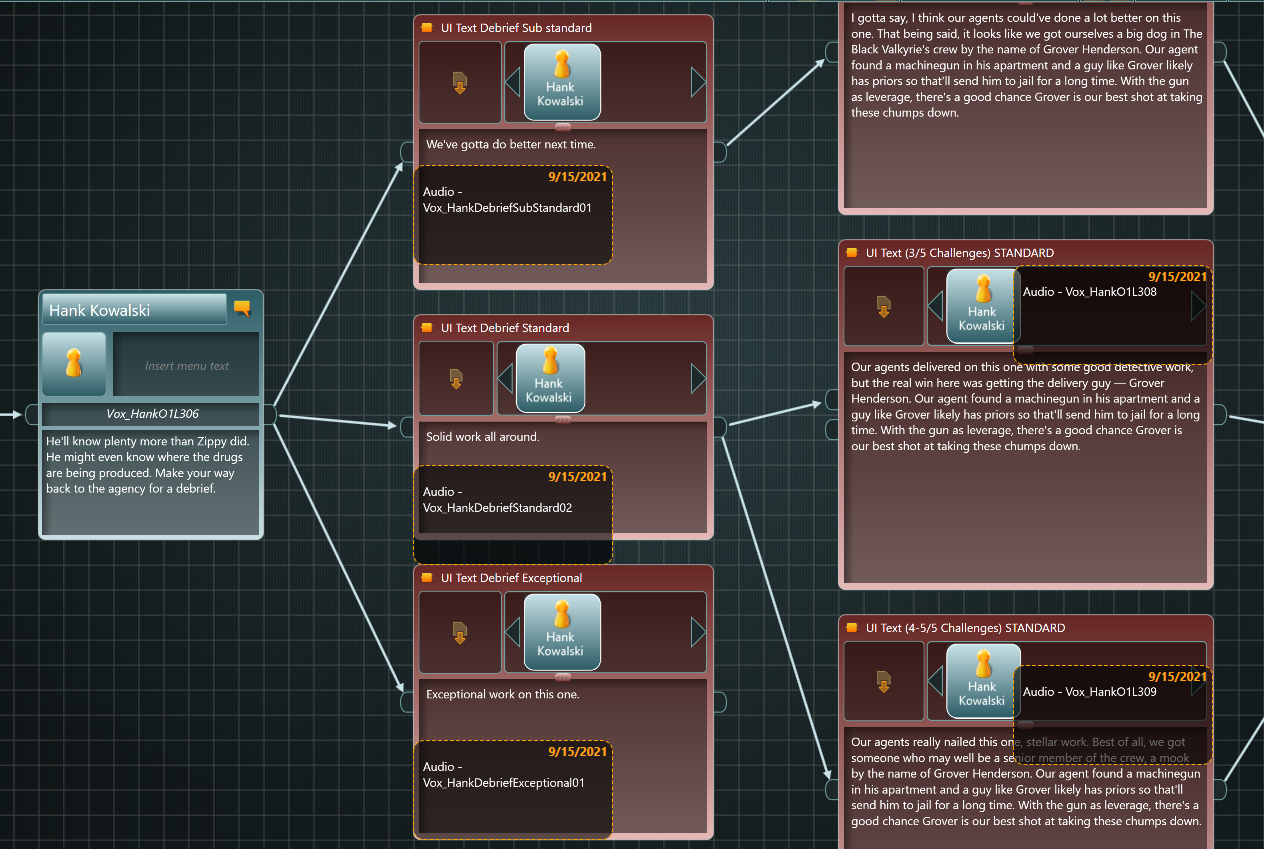
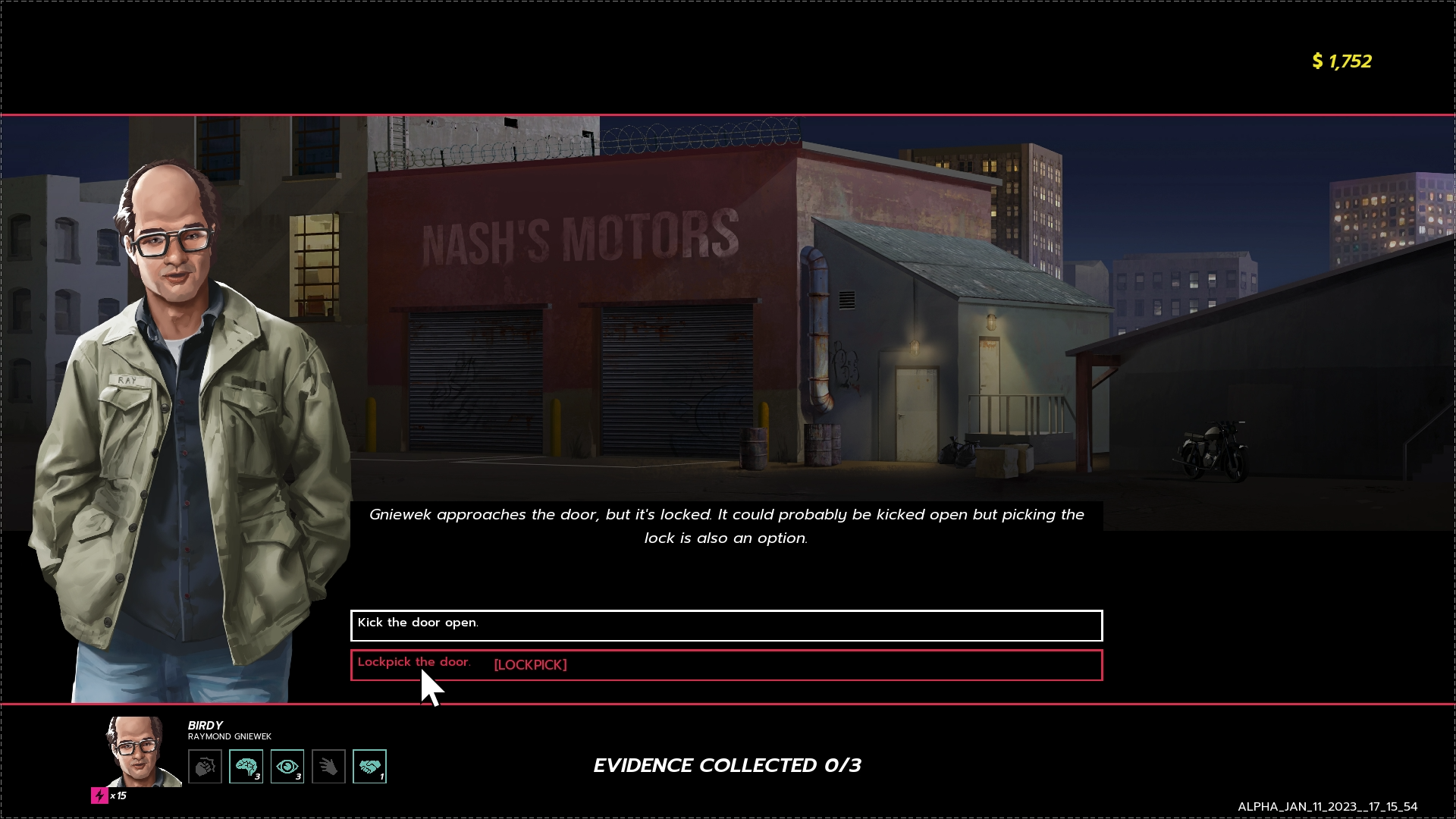
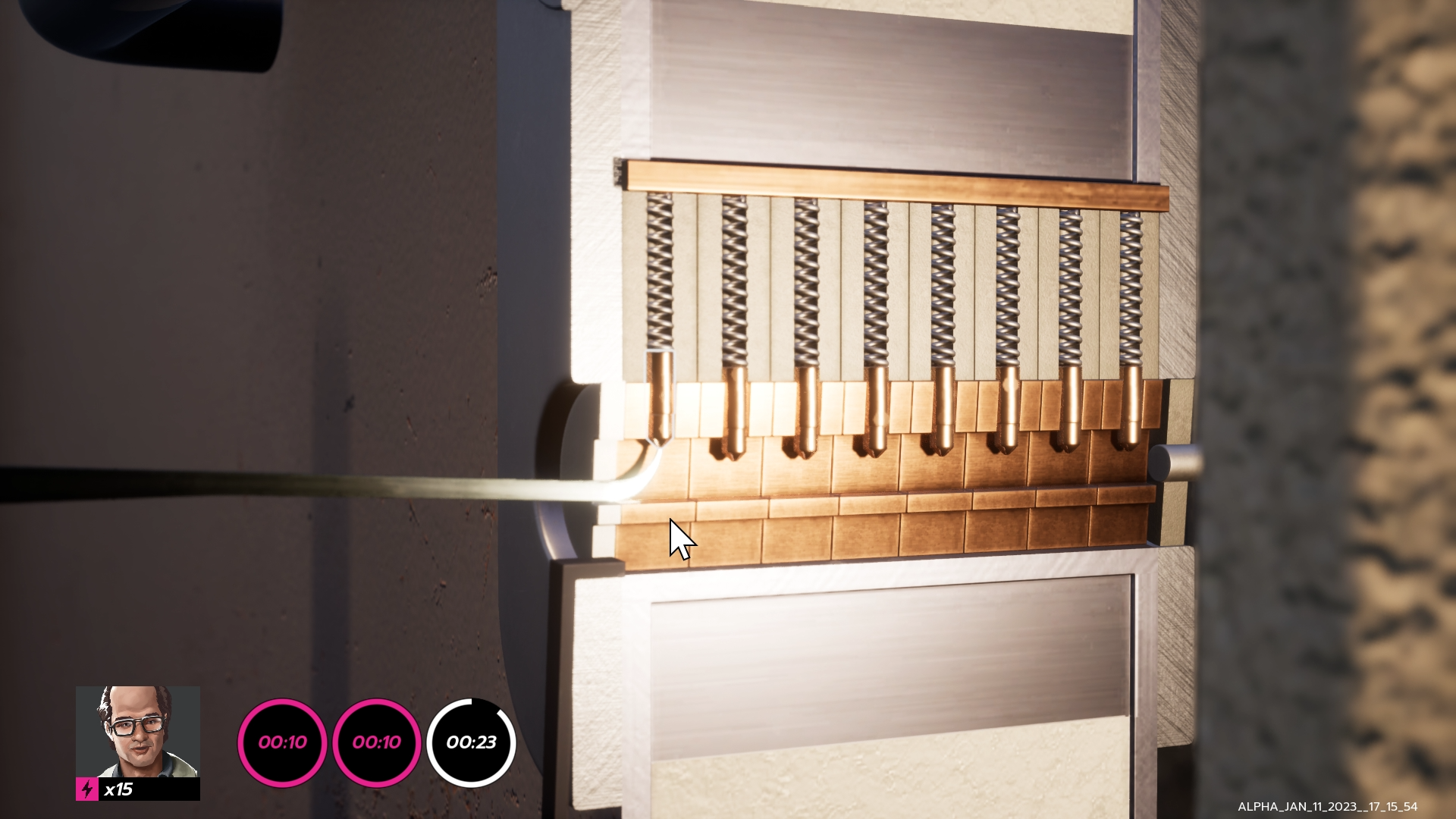
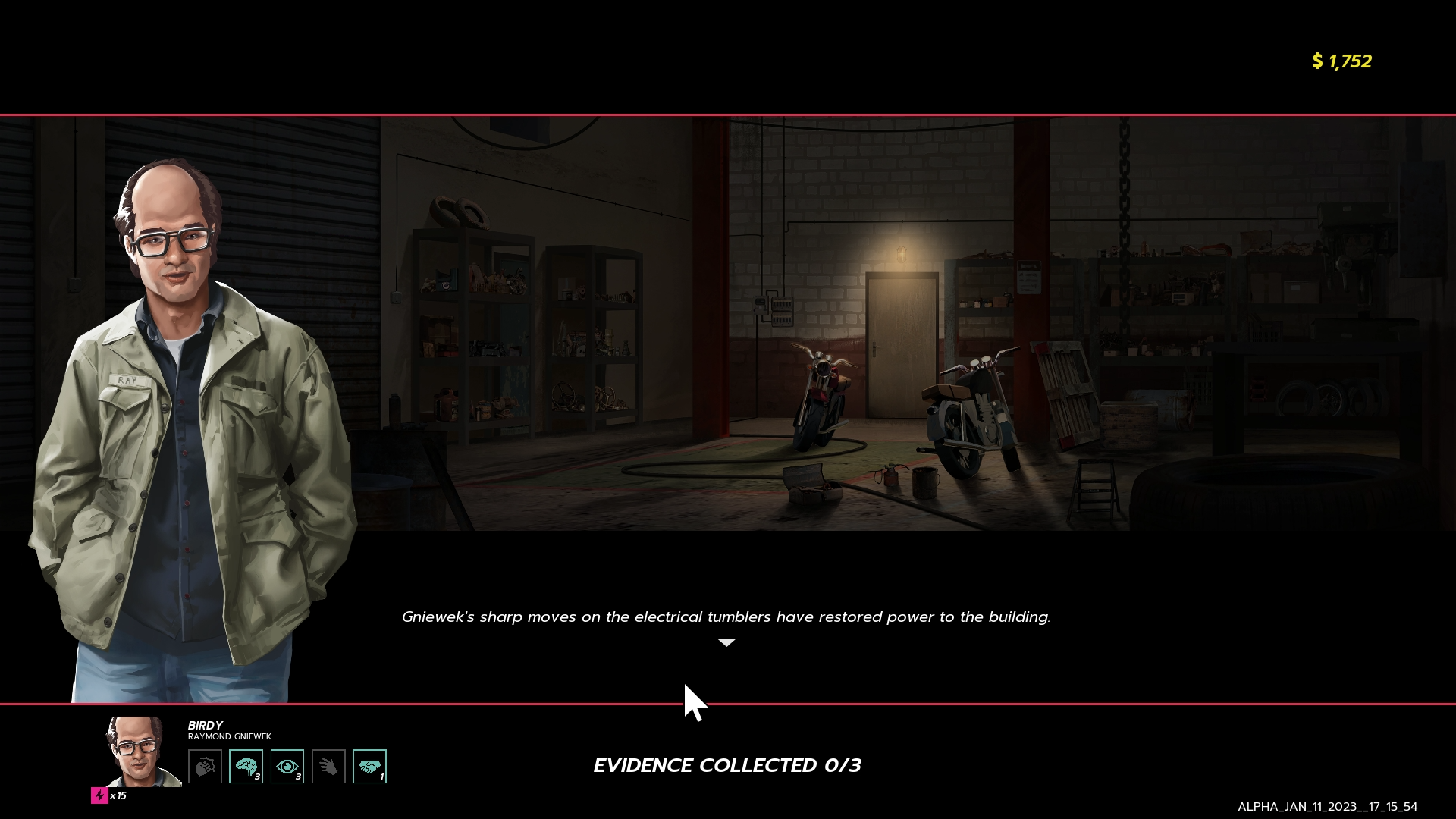
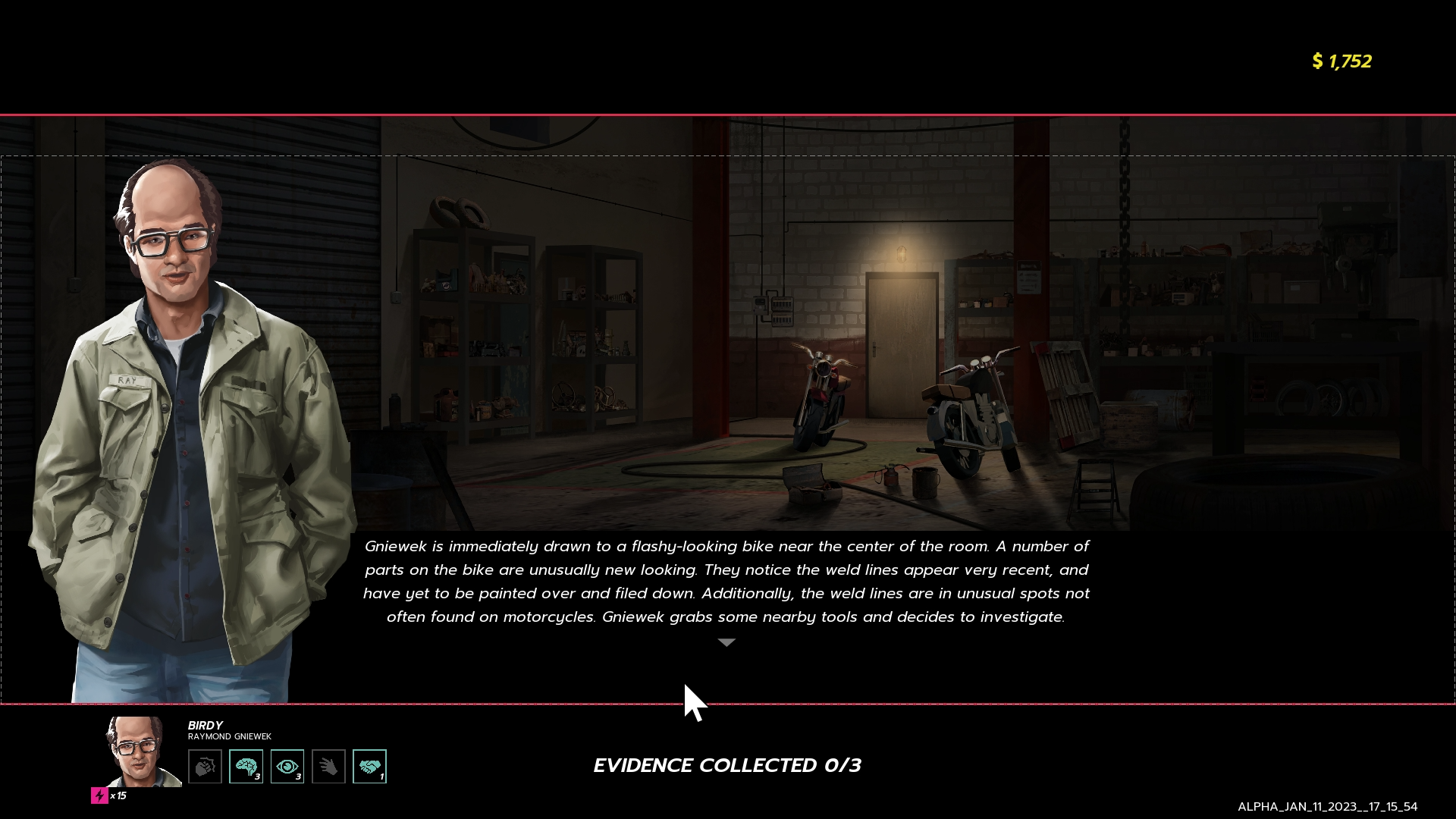
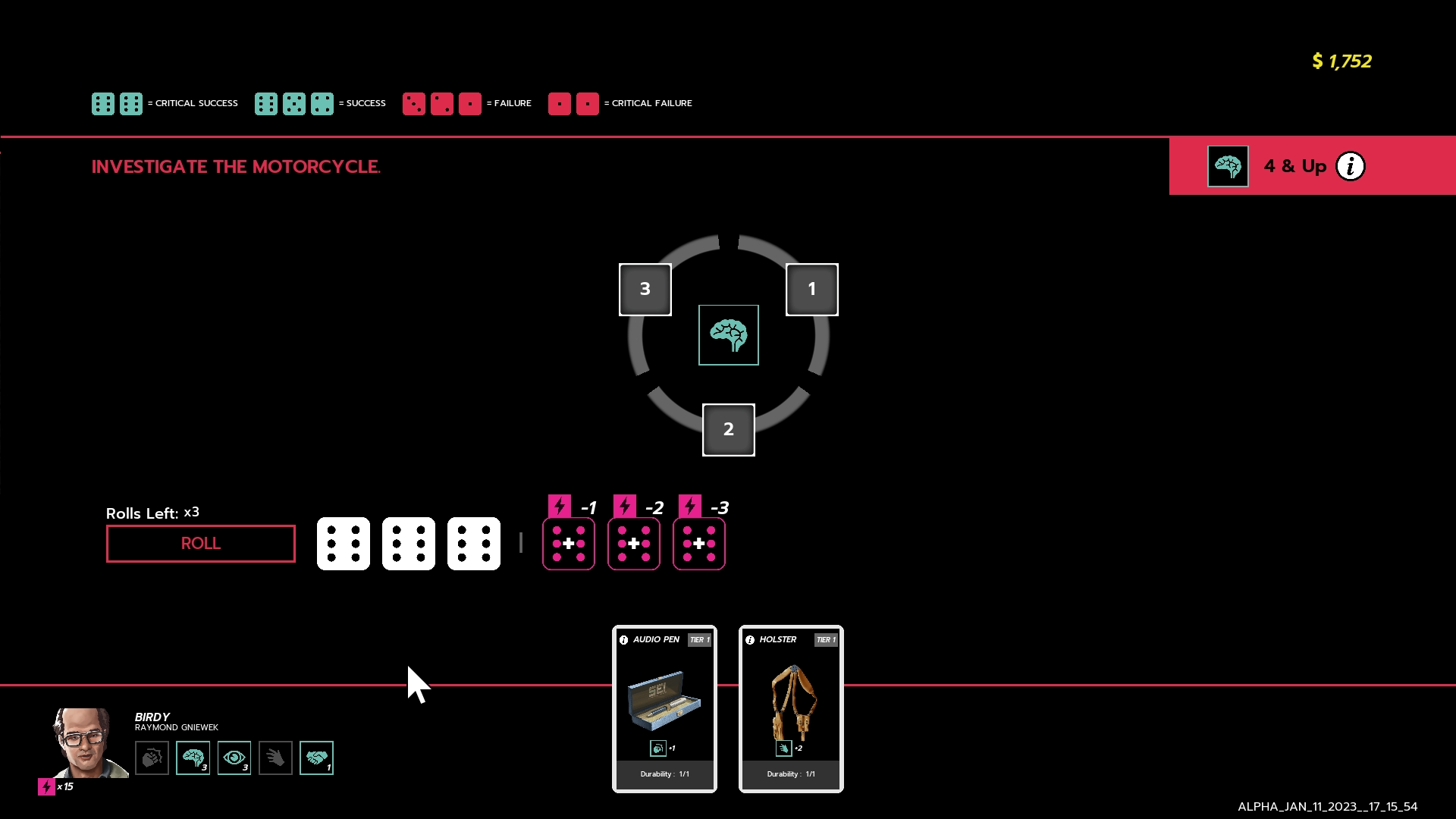
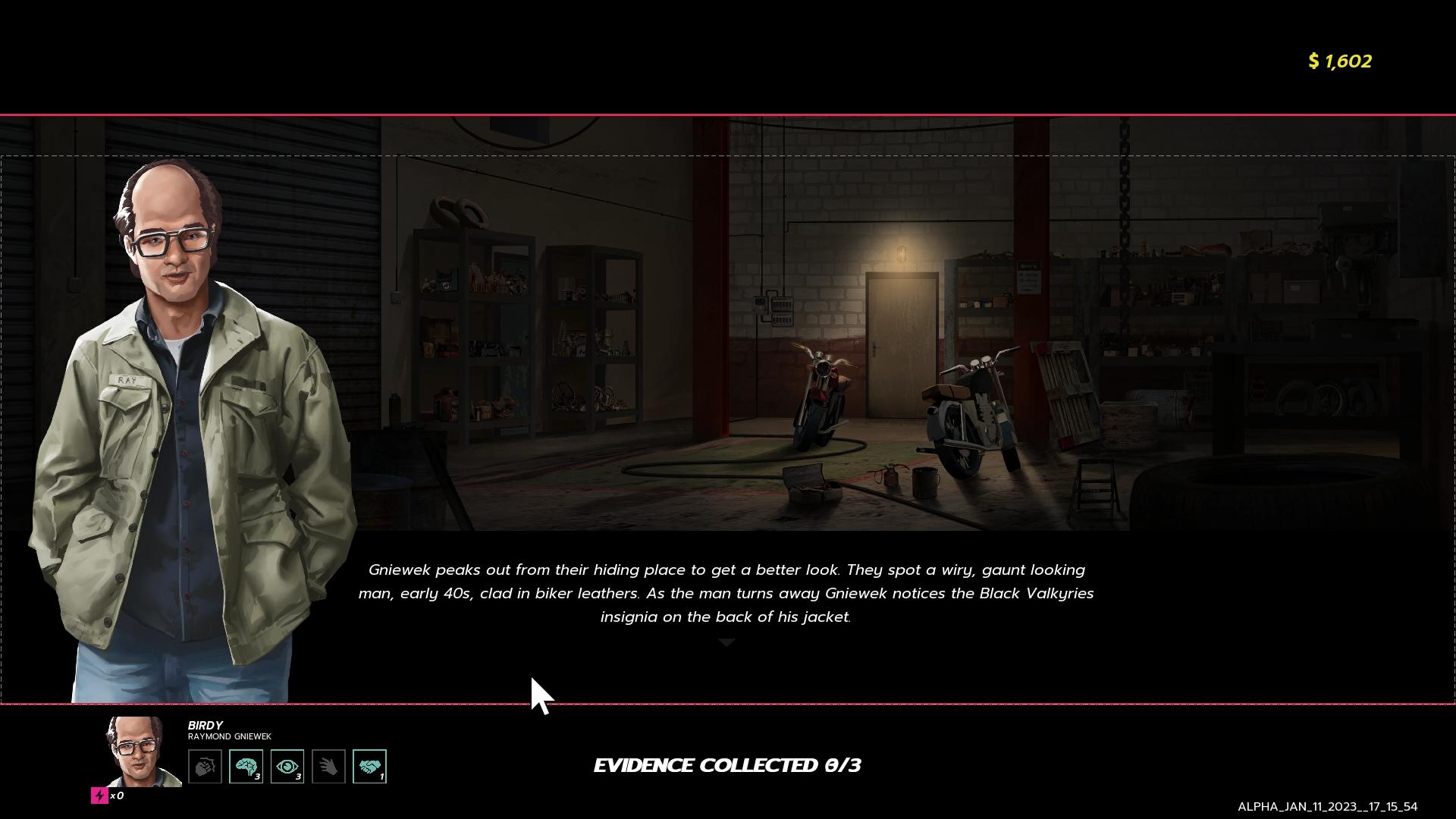
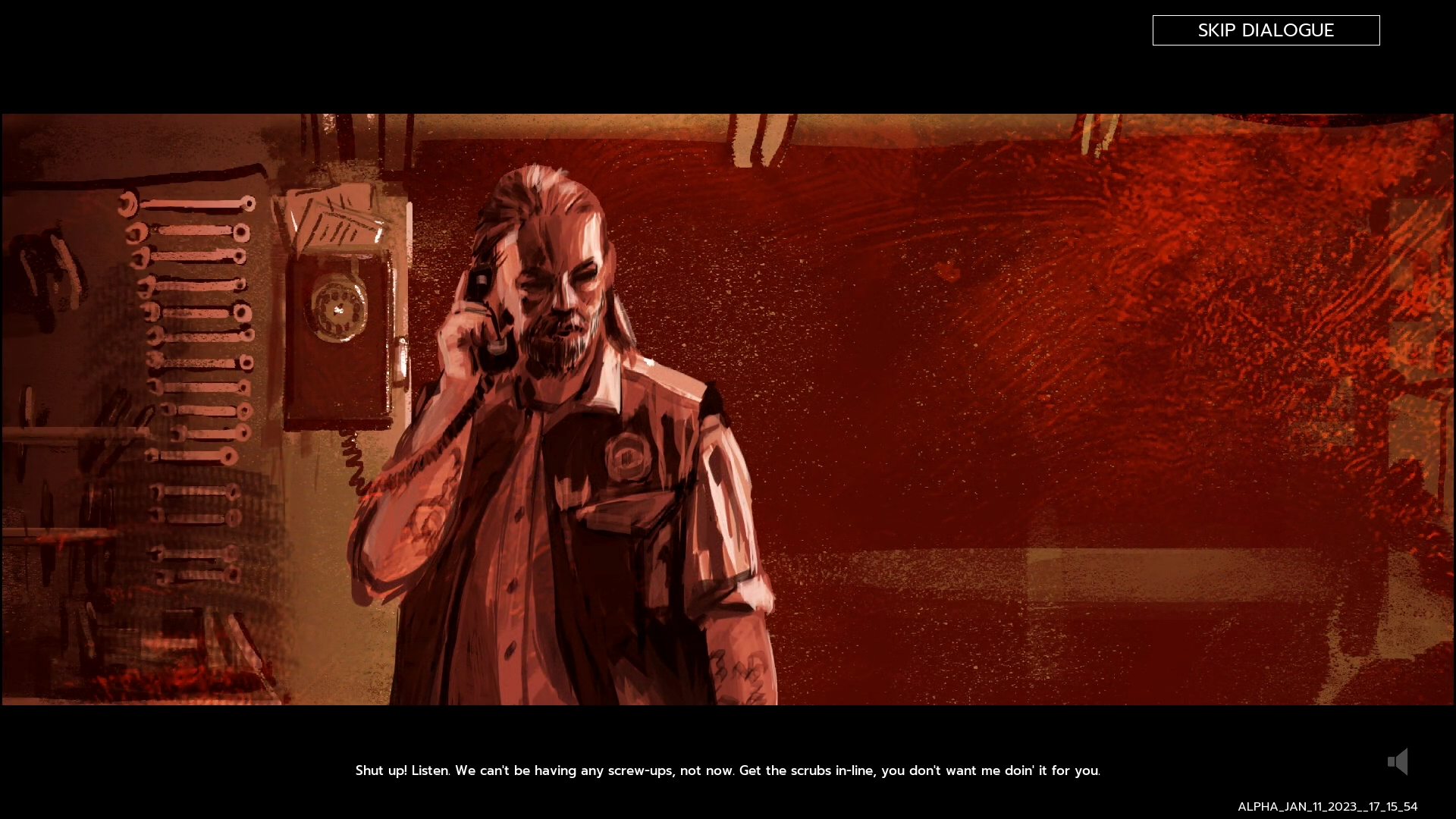
Promotional material
In the video below, I briefly discuss my approach to the narrative as a part of the marketing material for the game.
